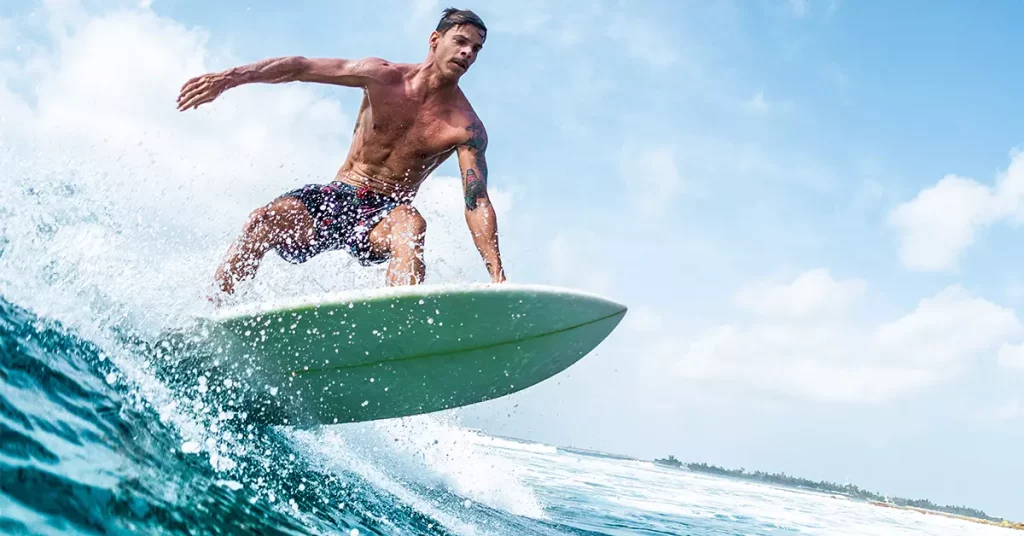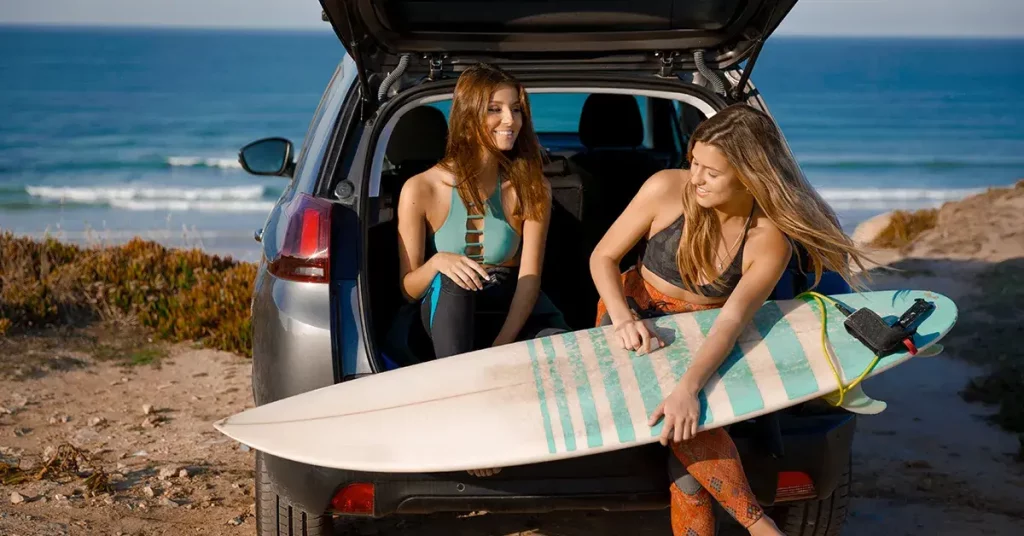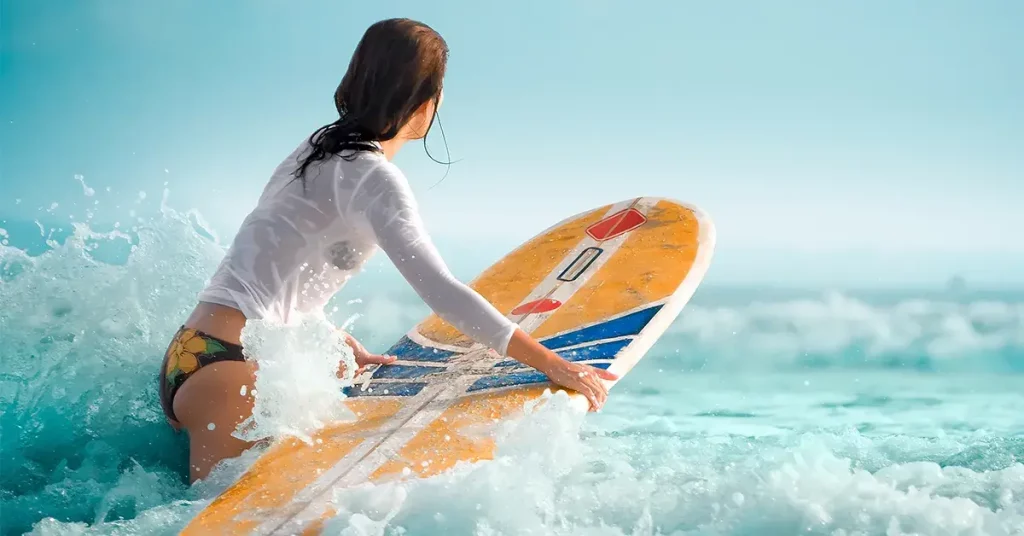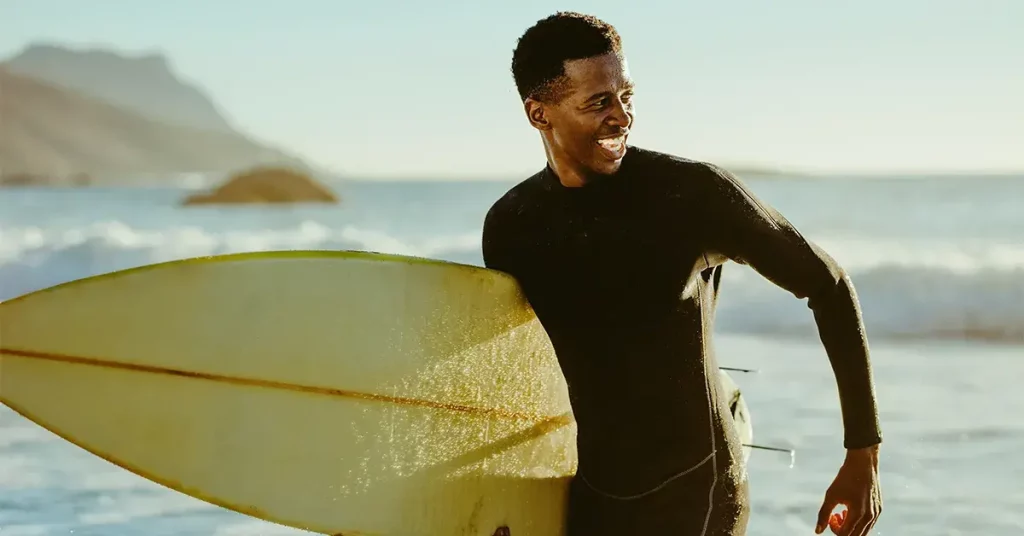Is surfing hard? Yes, it’s a difficult sport, and not everyone makes it past that first attempt.
If you’re thinking about getting into surfing, knowing a few things before you start your surfing journey can make the difference between surfing success and surfing failure. You can have an enjoyable learning process if you follow these tips for making surfing easier.
What Makes Surfing Harder Than Most Sports?
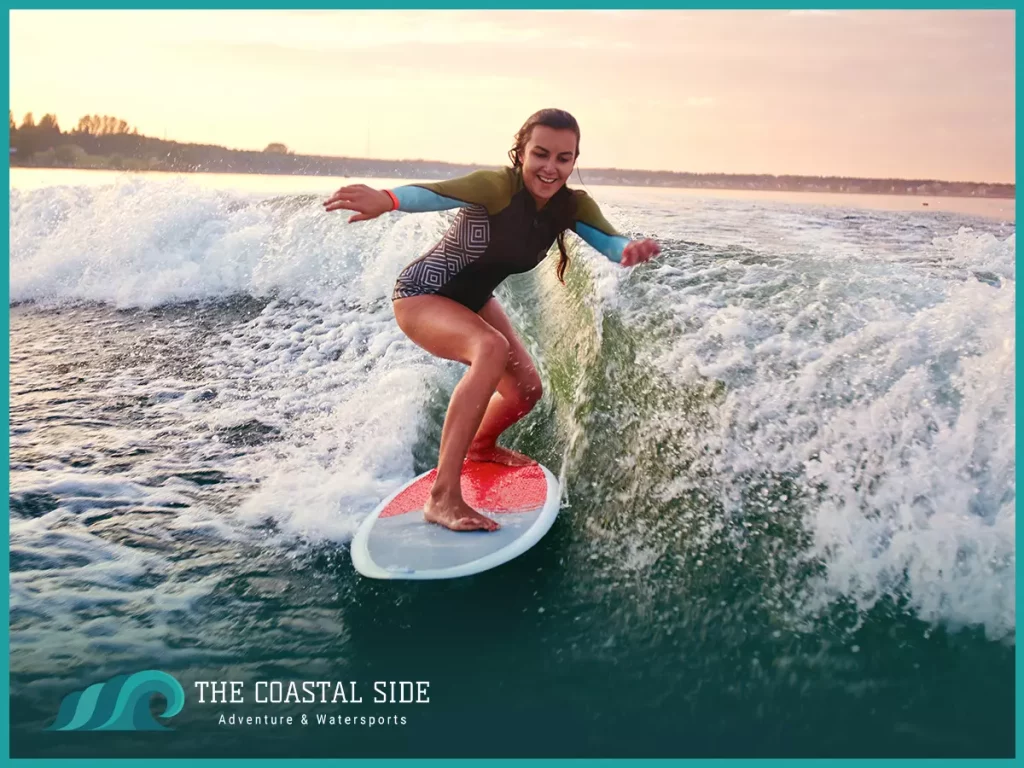
Surfing has been around since before recorded history, and at least 2.68 million people in the U.S. go surfing each year at least once.
Is surfing hard? Yes, but it’s also rewarding. When you first start, you’re going to get pounded. But, when you catch your first wave and ride it without wiping out, all the hard work is worth it. Surfers who have been surfing for decades still don’t feel like they’ve “mastered” it.
Let’s look at a few things that make surfing harder than most sports:
- Techniques: You can’t do systematic repetitive drills to practice it like with other sports. Because waves are ever-changing, it’s hard to practice and perfect new techniques.
- Fitness and stamina: Surfing is an intense workout. If you’re already physically fit, you’ll have more stamina to stay out longer and improve your skills.
- Environmental elements: Waves move fast, change size and directions constantly, and are all unique. Then, you’ve got wind, tide, and sandbank positions to consider.
- Work vs. Payoff: Waves only last a few seconds and are constantly changing. Only 5% of the time in the water is spent riding waves.
- Paddling: Paddling is hard work and draining. It often fatigues beginning surfers in less than an hour.
- Patience: Surfing requires a lot of patience.
- Practice: With waves lasting only a few seconds, it takes longer to get real practice. You may need 600+ hours of active water time to be ready for waves beyond 2-4 feet tall.
- Wipeouts: You’re going to have lots of wipeouts. Even the best surfers wipe out.
7 Tips to Make Surfing Easier
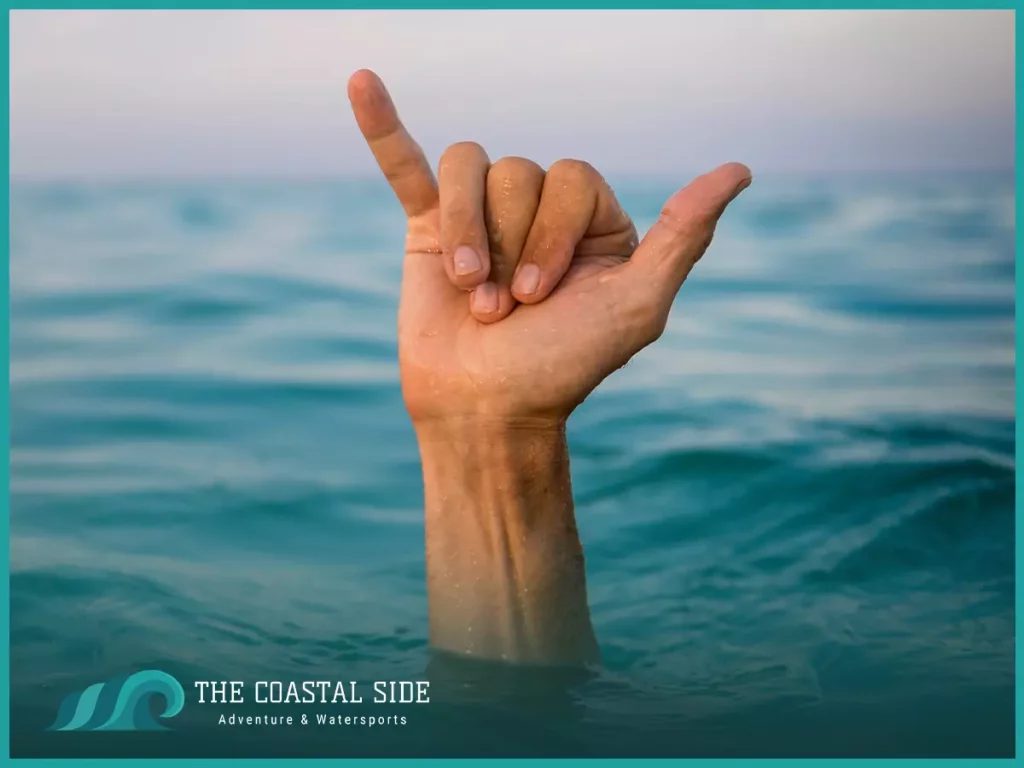
Now that we’ve looked at everything that makes surfing difficult, it’s time to look at what can make it easier. All the tips come from years of experience as a surfer, so mastering them will make you feel a little less like a grom.
1. Pick the Right Board
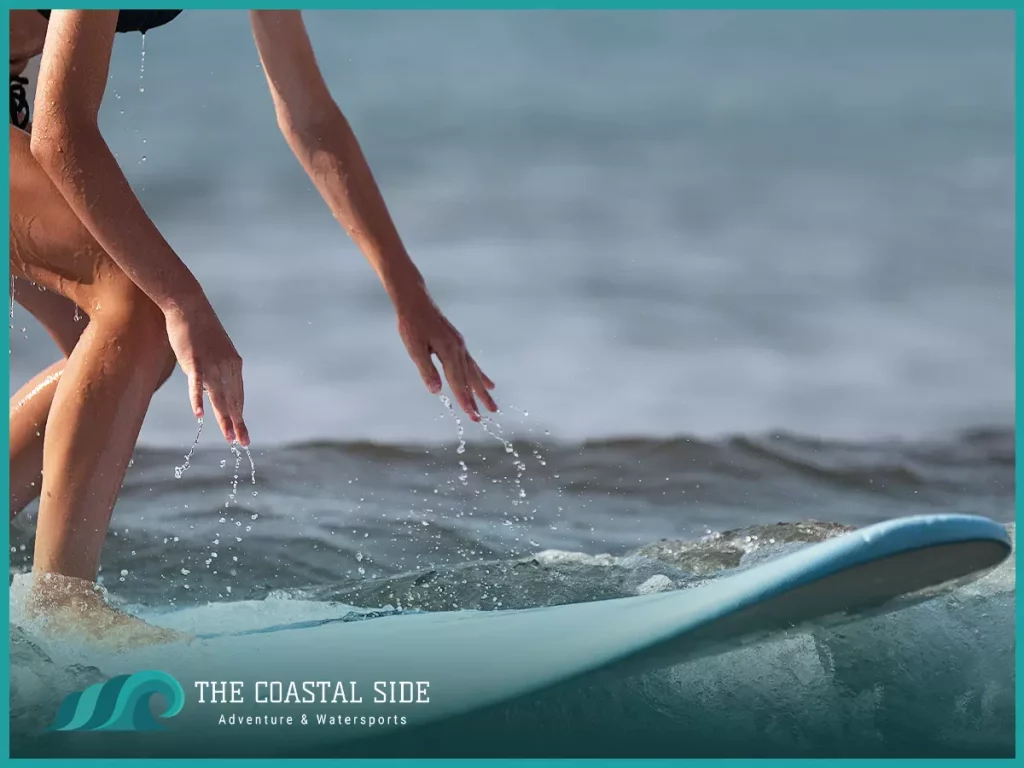
If you go to the surf shop and take home the coolest-looking board with the wrong fin configuration, you may be setting yourself up for failure from the beginning. Picking the right surfboard matters.
Having the right surfboard can make a difference between being able to thrash through the waves or coming back with your tail tucked between your legs in defeat.
As a beginner, you’ll want a board with more volume so it’s more buoyant and stable. The best surfboards for beginners to catch waves are longer, wider, rounder, and have thicker rails. The types you should look for are:
- Longboards
- Funboards
- Softboards
Choose a board that’s 7-10 feet long, and leave the thinner and smaller surfboards behind until you’re a more advanced surfer ready to learn to make tight turns and move faster.
Another important factor is your board’s material. While traditional surfboards are wood or fiberglass, a foam board is the best choice for learner surfers. Getting hit on the head with a foam board while you’re learning is far less painful and safer.
2. Take a Few Lessons to Learn the Basics
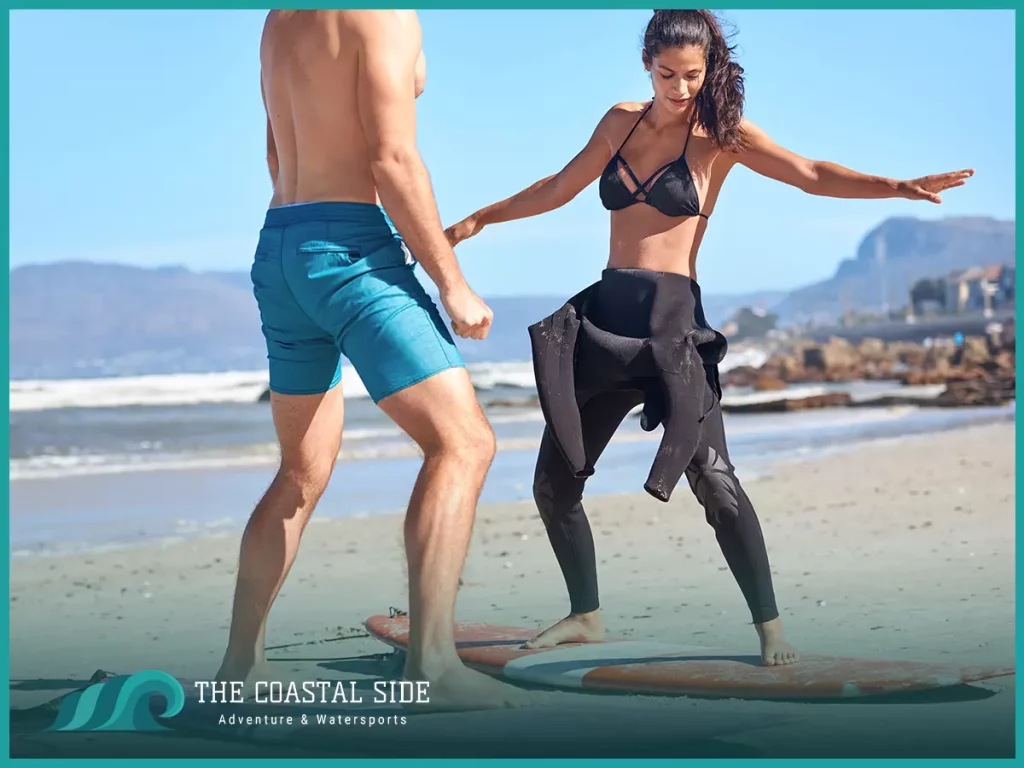
Even if you get just a few surf lessons, it will be easier to learn to catch waves. A surf coach teaches techniques that will have you catching waves faster than if you try to figure it out on your own.
For a more immersive experience, you might even look for surf retreats or camps when you’re learning to surf.
You can learn surfing basics from a surf instructor in just a few sessions, with each surf session getting you closer to your first wave. Surf instructors generally cover:
- Surfing safety
- Attaching your leash
- Paddling
- Duck diving
- Pop up
- Standing techniques
- Falling properly
- Turning
- Learning to read the waves
- Catching waves
- Understanding and surviving currents
3. Understand the Ocean

Your local beach may be a different surfing experience than a new surf spot. Being aware of surf conditions can be vital to your safety. A good surf coach will help you understand all these things when you learn surfing.
Some things you need to understand and keep your eye on for different surf spots include:
- When the tides change
- Which tides are best for surfing
- Wave conditions
- Weather conditions
- Water current conditions
All these surf conditions constantly rearrange themselves so that you’ll surf differently daily and even hourly.
It’s also important to know what the beach warning flags mean on your local beach. Getting caught in a rip current can be dangerous, even for experienced surfers that seek them out on purpose.
4. Choose Your Waves Carefully
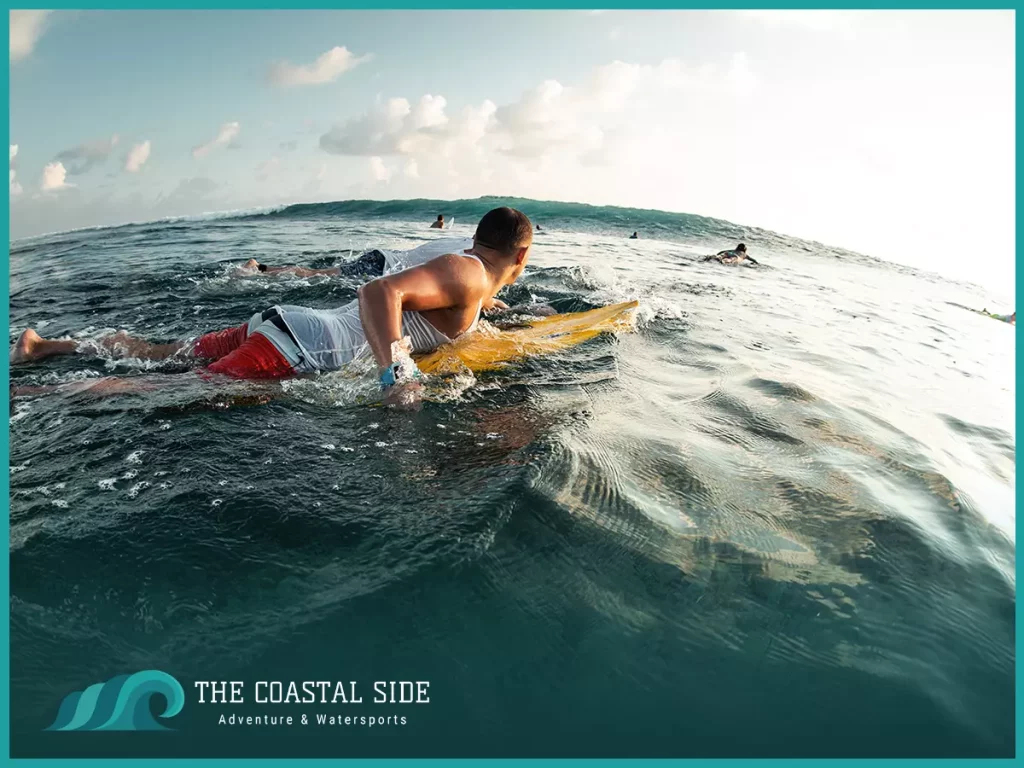
Your surfing lessons should have taught you how to read the ocean surface to know which waves are easy enough for your surf level. Eventually, you’ll develop the muscle memory to ride waves that other surfers can catch, but there’s a learning curve at the beginning.
Breaking waves don’t move very fast. However, a wave that’s too big for beginner surfers can be overwhelming when you realize that it’s become a wall of water that’s about to collapse over your head. Surf instructors can help you read waves to know when to pop up.
Reading waves is vital to finding good waves, and it may take a while for the perfect wave to come around so you can duck dive it. But your patience will eventually pay off.
To find good waves, you should notice the wave period, which is the average number of seconds between waves. The longer between waves, the better the wave quality:
- 1-5 seconds: Waves are unsurfable.
- 6-8 seconds: Waves will be weak, mushy, and barely rideable.
- 8-10 seconds: Waves will be fairly weak, crumbly, have minimal wave face, but be surfable.
- 10-12 seconds: Waves have a more pronounced shape, arrive in uniform sets, have more wave face, and will result in a longer surf ride.
- 13+ seconds: Waves will have uniform lines, provide bigger gaps between sets, and result in longer surf rides.
Understanding the wave breaks is also important. When you’re first learning wave riding, the perfect wave is one that you can catch as it’s feathering. The peak will show a small froth of whitewater right before it fully breaks. The right wave will also have a defined peak that tapers off gradually on each side. Such waves peel without immediately closing.
You’ll need 80-120 hours of practice learning to surf whitewater before you can easily surf unbroken waves, so have patience.
5. Don’t Surf in Conditions Outside Your Comfort Zone
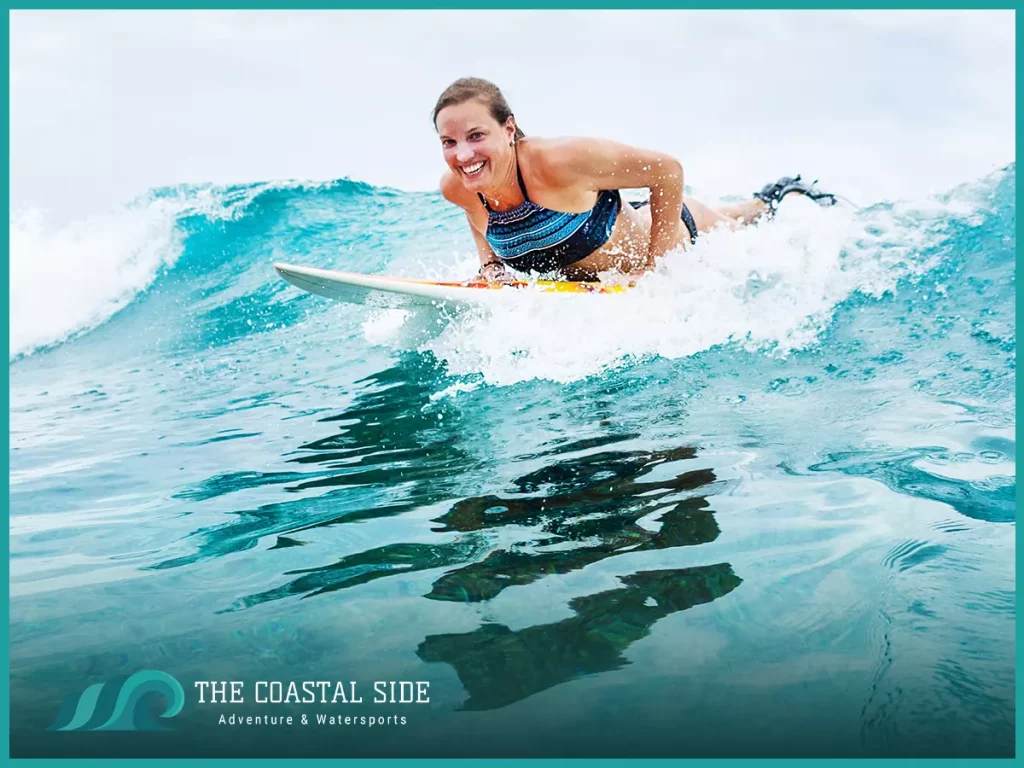
You have a lifetime to make surfing goals. So, when you start surfing, enjoy being a beginner. You’ll eventually get to the bigger waves that you see more experienced surfers riding.
The best beaches for beginner surfers are ones where the waves break over clearly-defined sand bars so that the wave shapes are more predictable. You’ll want to avoid wave breaks that are too fast, reefs, and rocky surface spots until you don’t fall off as often.
Choosing the right surf spots is essential. As a beginner surfer, you want to catch easier whitewater waves. The whitewater area is where the waves have already broken.
6. Center Balance is Key
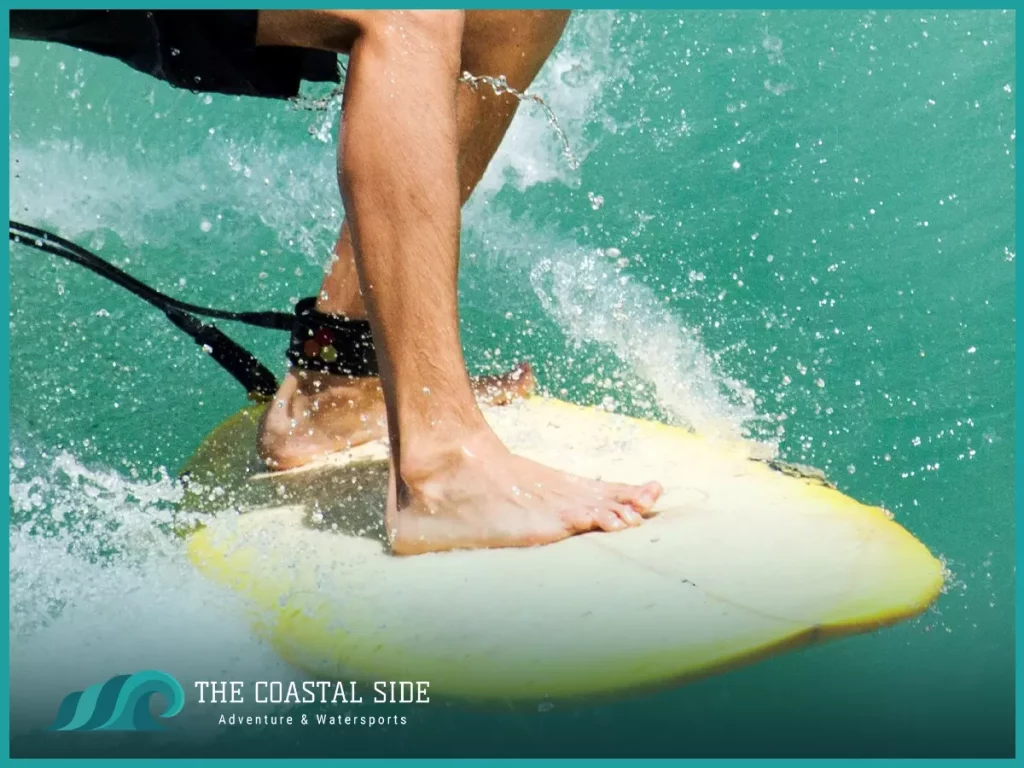
Surfing is a complex sport. Until you learn where to balance on your board, you’re never going to learn to surf. It’s as simple as that.
You can practice balancing on a balance board on land to improve your muscle tone.
However, it’s also important to learn to find the sweet spot in the center of your board as soon as you pop up. Don’t forget your surf wax– it will help your feet grip that sweet spot when out in the slippery water.
When you’re learning to surf, the bigger your board, the bigger the sweet spot, and the easier it is to get the balance right. If master balancing in the center, you’ll eventually reach a stage where you rarely fall.
Landing in the center of your board is the key ingredient to catching your next wave. If you jump onto your board near the nose, you’ll push it into the water, which will make you fly forward. On the other hand, if you land too near the back of your board, you’ll slow down and miss the wave.
New surfers often trace the shape of their surfboard in the sand and practice popping up into a standing position in the right board location. However, doing this in the water requires being in good physical shape.
7. Learn What to Do When You Wipeout
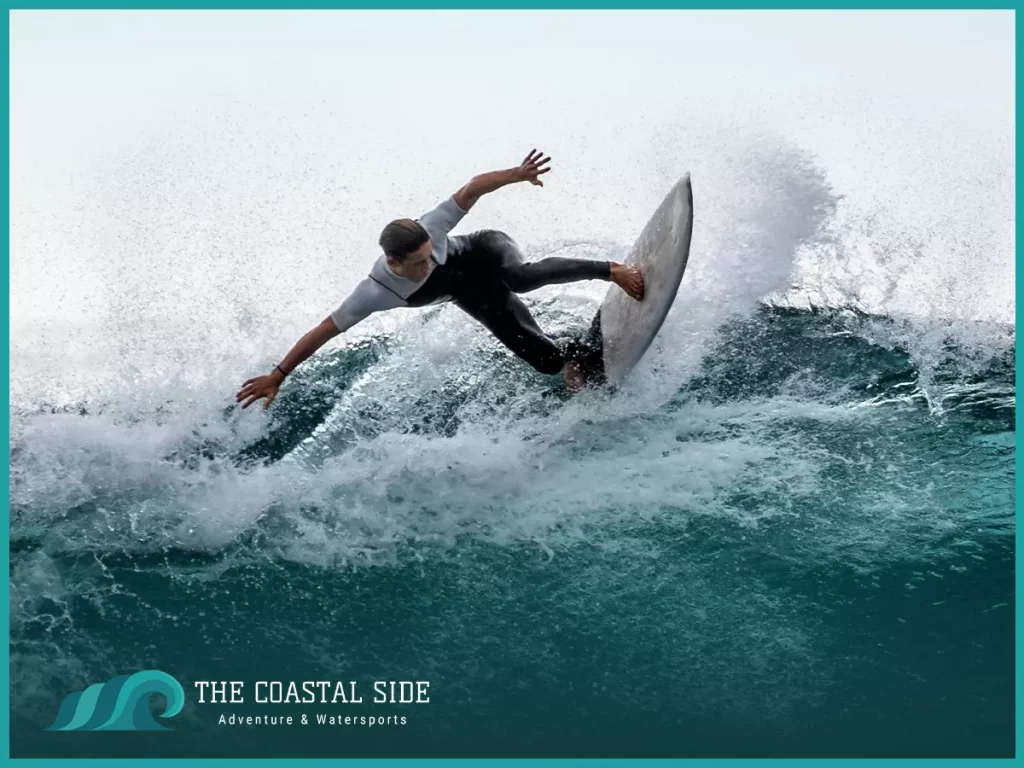
Wiping out is an inevitability, especially when you’re learning surfing. It’s natural to panic the first few times you wipe out and get held down under the waves. However, learning to be calm can serve you better. Here’s what you can do to turn the chaos of a wipeout into a calm process:
- Fall properly: When you fall, make sure that you fall bottom first and away from your board.
- Protect yourself: Cover your head and face with your hands.
- Don’t fight: Staying calm and using meditative breathing techniques can help you stay underwater longer. When you fight to get back up to the surface, you waste valuable energy and oxygen.
- Observe: Take note of your underwater surroundings to figure out which way is up and which way is down.
- Find your board: The first thing to do when you resurface is to find your board. Your surf leash attached to your ankle helps you to find your board easily.
Final Surfing Thoughts for Groms

Is surfing hard? It’s an exciting sport and definitely has a steep learning curve. However, with proper surf coaching and the right surfing conditions, you could be riding your first wave in an hour.
Ultimately, your total time surfing determines just how long it will take for you to get really good. Start with smaller waves and put in the time. Eventually, you’ll find you’ve moved from being a grom to being a proper surfer.

